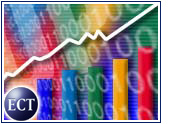
For anyone who has been involved with e-commerce for any length of time, the experience must feel like a roller coaster ride. The slow, clackety, adrenalized journey upward. The heady weightlessness as you reach the pinnacle. The screaming plunge — and then, the hope that there is at least one more trip skyward left to go.
No doubt, there are plenty of thrills and chills left in the E-Commerce Cyclone. But now is as good a time as any to reflect on the ones that have come so far — the 10 Key Moments in E-Commerce History.
So buckle up, and keep your hands inside the car.
1) 1984: ASC X12 is AOK
First, e-commerce simply had to get on track.
In 1968, the emergence of Electronic Data Interchange (EDI) allowed different companies to perform electronic dealings with each other. But there was no guarantee that the EDI format used to deal with Company A could be used to transact with Company B.
It wasn’t until 1984, in fact, that the ASC X12 standard established itself as a reliable means to handle a large number of transactions. The moment eluded the spotlight, but it remains a key event that reined in the potential chaos of e-commerce.
“The beauty of EDI is it’s largely unseen, but it is an incredibly efficient vehicle for the transfer of information between organizations and trading partners,” said Kerry Stackpole, president and CEO of the Data Interchange Standards Association. “It’s sort of an invisible technology. It’s really at the core of most productivity improvements of the last half of the century.”
2) October 13, 1994: Netscape Arrives for the Masses
Marc Andreessen began spearheading the creation of the Mosaic browser, which enabled point-and-click access to the Web, in late 1992. As far as e-commerce goes, Andreessen is “probably the most significant person I can think of,” said Mitchell Levy, a former Sun Microsystems e-commerce manager and chair of e-business conference ECMsym.com.
“Mosaic was the breakthrough,” Gartner Group research director Robert Labatt said. “Mosaic was the first browser ever used. Tons of people downloaded it. It was simple but you could see the vision.”
And yet, the creation of Mosaic may not have had as much impact on e-commerce as Mosaic’s adaptation, by Andreessen and Jim Clark, into the downloadable Netscape browser. In a dual stroke, Netscape expanded access to e-commerce and kick-started the precedent for making software available to a wide consumer audience at no cost.
“The technology hurdle used to be pretty great for someone who just wanted to get online and do things,” said U.S. Bancorp Piper Jaffray senior research analyst Greg Konezny. “You needed to practically be a computer programmer to do it. The Netscape browser made it pretty easy for anybody.”
3) May 27, 1998: DSL Expands Across California
History remembers when Chuck Yeager became the first person to break the sound barrier in an airplane — an event that whetted the world’s appetite to get common passengers up to that speed.
Likewise for e-commerce, the idea that an expanding group of everyday customers could essentially reach Mach 1 with their Internet connection — and stay there indefinitely — was a tantalizing dream.
After a series of small-scale trials, SBC Communications took the plunge by offering high-speed Asymmetrical Digital Subscriber Line (ADSL) service to more than 200 communities throughout California. Users who had been accessing the Internet at 28.8 kilobits per second could now fly at 50 times that speed.
“The persistent or always-on connection is the real driver behind increased usage of the Internet,” Labatt said. “The higher bandwidth brings a richer experience, which is likely to drive greater commerce.”
4) December, 1998: The Big Online Holiday Extravaganza
Millions of people had reason to celebrate on New Year’s Eve, 1998. But fewer may have had more reason than e-commerce’s retail giants.
The holiday shopping spree lifted Amazon over the $1 billion (US$) barrier in annual sales. Not bad, right? Well, AOL generated $1.2 billion in sales in 10 weeks of holiday shopping alone.
“I was not at AOL at the time,” current AOL vice-president of e-commerce Patrick Gates said. “I was in the offline world in retail when I read those numbers. Those numbers struck fear in the offline industry.”
5) August 10, 1999: Red Hat IPO Cements Linux’ Status
Microsoft is more than Goliath. Microsoft is Goliath with connections. Microsoft is Schwarzenegger.
But Linux, the operating system created by Finnish graduate student Linus Torvalds in 1991, had its own weapons with which to battle the Terminator. Linux had speed, reliability and most notably, an open source code that allowed itself to be customized by its user. Year after year, Linux slowly gained market share on Microsoft.
Then Red Hat, a seller of Linux software, staged an initial public offering that captured the imagination of the industry and more than a few investment dollars. Though Red Hat has since settled down from its 52-week high of 151 5/16 to a current level in the 20s, the status of Linux as a market force was solidified once and for all.
“To a great extent, Linux achieved what was unthinkable just a few years ago, which is to put Microsoft on the defensive regarding its cash-cow Windows NT product (now Windows 2000 Professional),” E-Commerce Times industry analyst David Geller said. “The message to Microsoft is that the time has come to invest heavily in regaining mind share among e-business and technology decision-makers. Otherwise, we can expect the dominant e-commerce platform of choice to be Linux.”
For Part II of this report, Click Here.

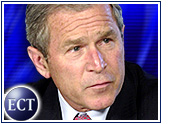

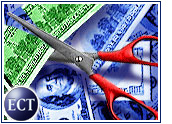
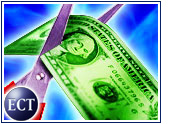
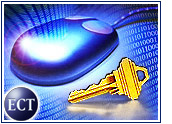


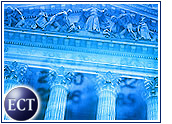


































Social Media
See all Social Media